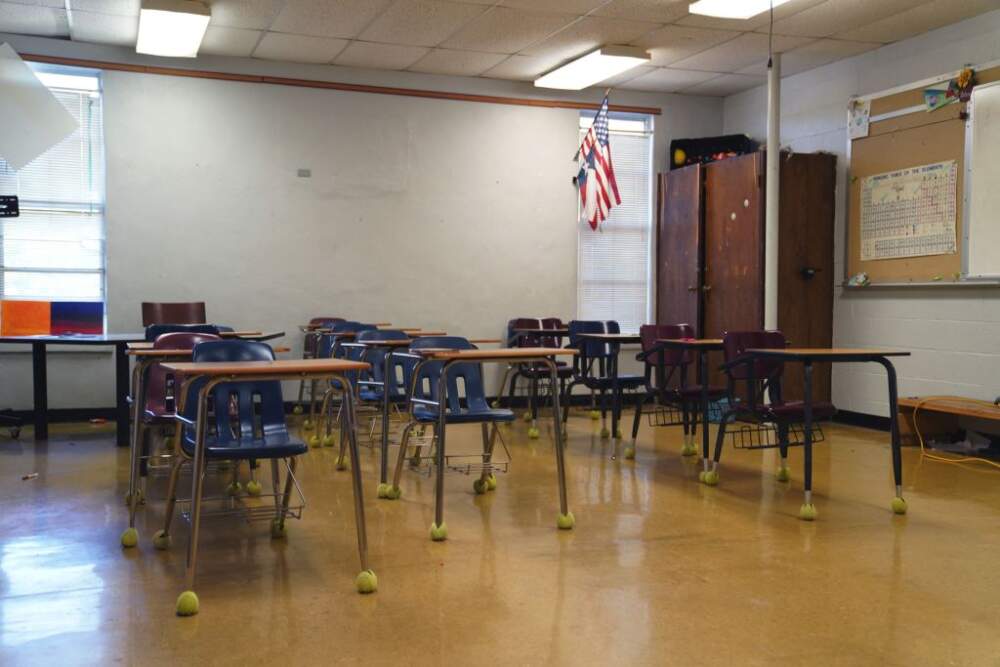Advertisement
Commentary
The biggest threat to our students is gun violence

Our kids are in grave danger.
According to the loudest voices, it's the "woke agenda" that puts them at risk. Schools want to indoctrinate kids with critical race theory. Trans people are invading student bathrooms. Drag performers lurk in libraries, armed with pronouns and rainbow pins.
From social media and primetime television to the floors of Congress, the message is loud and clear: We must protect our kids. And people are listening.
Yes, kids are in danger. And yes, we must protect them. But here's the quiet truth: The biggest threat to young people in our country isn't diverse books, trans athletes or equity training: It's gun violence.
This back-to-school season, one of the most critical ways we can support and measurably protect our young people is through gun violence prevention.
At some point, every educator has experienced the devastating impact of gun violence in schools. In the wake of high-profile school shootings, we are distracted. We lose instructional time unpacking the fears our students share with us — worries about their safety in our buildings, suspicions about their peers. "What if the shooter camps outside the exit?" they ask. "What if they're hiding somewhere right now?"
The issue of gun violence is not theoretical for us. It’s not an abstract political talking point. It has become an unavoidable part of our work with children.
Instead of addressing student mental health or building instructional skills, we spend our advisory periods and professional development time watching videos on how to evacuate, create distractions and, when all else fails, attack the gunman with classroom objects. We endure trauma-inducing shooter drills and lockdown simulations.
As pundits argue over whether arming teachers, installing metal detectors or hiring school resource officers would make our students safer, we look around our classrooms, doing the mental geometry: This table on its side at that angle against the doorknob, the sightline from that window to this hiding spot. And when gun violence claims young lives in our communities, we mourn alongside our students at funerals and in local gatherings, trying to comfort them from within the fog of our own grief.
But preventing gun violence for kids is not just about what happens in schools.
While the US has endured more school shootings than any other country, the vast majority of firearm-related deaths and injuries for children and adolescents happen outside of school. They happen as assaults in our neighborhoods, as suicides in our homes, as accidents in every imaginable place — with or without adult supervision.
Since 2020, more children (ages 1-18) have died by guns than anything else, with an estimated one-fifth of childhood deaths in 2021 involving firearms. To put this in perspective, that’s nearly 3,600 gun-related deaths. And children who survive gun violence? They experience lasting trauma.
Put simply, preventing youth gun violence cannot be achieved by safety measures in our schools alone. It can only be achieved when we comprehensively reduce the risk of any child ever having to encounter a bullet – at school, yes, but also at home and in movie theaters, shopping malls, places of worship and everywhere else kids exist.
To truly 'protect our kids' means advocating for common sense gun violence prevention and safety measures, not just in our schools but in our communities and society at large.
To truly "protect our kids" means advocating for common sense gun violence prevention and safety measures, not just in our schools but in our communities and society at large. We can follow the plan recommended by survivors of the Parkland high school shooting, which includes raising the standards for gun ownership and seeking accountability for the gun industry. We can leverage the existing partnerships between schools and families to educate parents about the importance of keeping firearms unloaded and securely locked and separate from ammunition, at back-to-school nights and parent-teacher conferences.
And we can urge our legislators to support HD4420 so that Massachusetts’ strong gun laws can continue to provide a model for other states.
As educators, we can continue to protect our kids by re-centering the conversation. We can reject sensational narratives of imaginary threats that only function to distract us and remind our school communities of what's truly putting our kids in danger: It's the guns. It’s always been the guns.
Sydney Chaffee, 2017 National Teacher of the Year, is a high school teacher in Boston and a Teachers Unify to End Gun Violence Ambassador. TK Nagayoshi, 2020 Massachusetts Teacher of the Year and recipient of the 2021 Horace Mann Award for Teaching Excellence, is an adjunct professor.